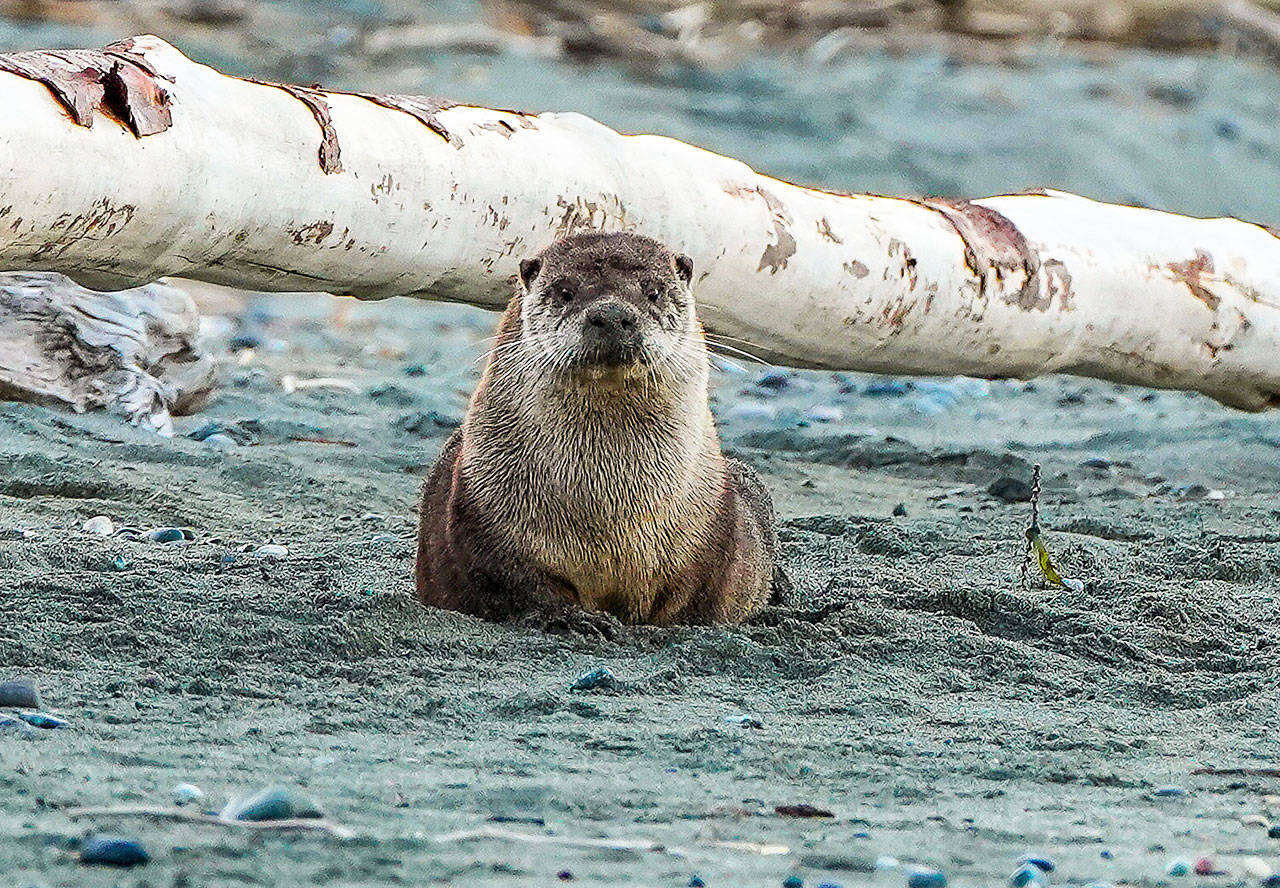Whidbey Island is considered a special place by many, and that goes for a particularly cute marine mammal as well.
After plans for another site to perform her sabbatical research fell through, a visit to Coupeville turned the tide for comparative behaviorist Heide Island. She found that Admirals Cove and its close proximity to Crockett Lake created an ideal location for the marine foraging animals at the center of her research. Though named river otters, these mammals live in a variety of habitats and hunt in fresh and saltwater.
Island, a professor at Pacific University in Oregon, spent the past eight months studying the creatures that call Central Whidbey home.
The Whidbey Camano Land Trust, which provided her a permit to do research on its Crockett Lake Preserve, is hosting a free talk at 6:30 p.m. Wednesday, July 17 at the Coupeville Rec Hall. Island will discuss her findings, answer questions and let people know how they can get involved in the research.
The data collection was not always easy, and residents who would notify Island when they saw otters or their droppings were key to helping her find the elusive critters.
“It isn’t something where you just get to be Jane Goodall out in the field and they’re there,” Island said.
She observed eight otters for months, and still only had about a 25-percent success rate of seeing them when she went out. They tend not to stay in one place, are skittish and keep a low profile in the water. Sometimes she only had about two minutes of observation time before the critters were out of sight.
She confirmed five furry residents of Admirals Cove and three transient otters that have overlapping territories. Four are a kinship group — a matriarch female named Patches and her three offspring. A male, named Handsome, sometimes joins the four.
Patches and her offspring hunt cooperatively. They never share food, but at least three of them often swim in a tight huddle and consume fish together.
Handsome has his own unique way to catch his food. Island said she’d observed him “bubble feeding;” he dives down and blows bubbles, which causes forage fish to jump out of the water, and he jumps like a porpoise after them.
Island has not read or heard of otters using this technique, which is more commonly used by harbor porpoises and seals.
Her research focuses on the choices these otters make: when they hunt in fresh water versus the marine water, what they eat and when they’re active. She compares these choices to those made by captive river otters she’s observed at the Oregon Zoo.
River otters have flexible diets, which is part of the reason they are considered a keystone species. They keep populations of bottom-feeding fish like sculpin and flatfish in control without exploiting one particular resource. Whidbey’s river otters eat some birds if they’re available as well, she said.
The mammals are also an “indicator species,” which means they’re health is a good marker for the overall health of the ecology around them.
The Admirals Cove residents seem to be healthy and, relatively speaking, somewhat friendly to each other.
“I have not seen an altercation in eight months,” Island said.
She will finish out her year-long sabbatical in mid August, but her research will continue. She has laid the foundation for a five-year longitudinal study on Whidbey. She’ll continue to sample scat and tissue sometimes found in scat to look at persistent organic pollutants and create genetic pedigrees for the local population, she said.
She will return even after she goes back to being a full-time professor in Oregon, because the area turned out not to only be special for the river otters.
“I’ve since fallen in love with this place,” Island said.
• The Otters of Whidbey Island is 6:30 p.m., July 17 at Coupeville Rec Hall. RSVP at www.wclt.org/rsvp



